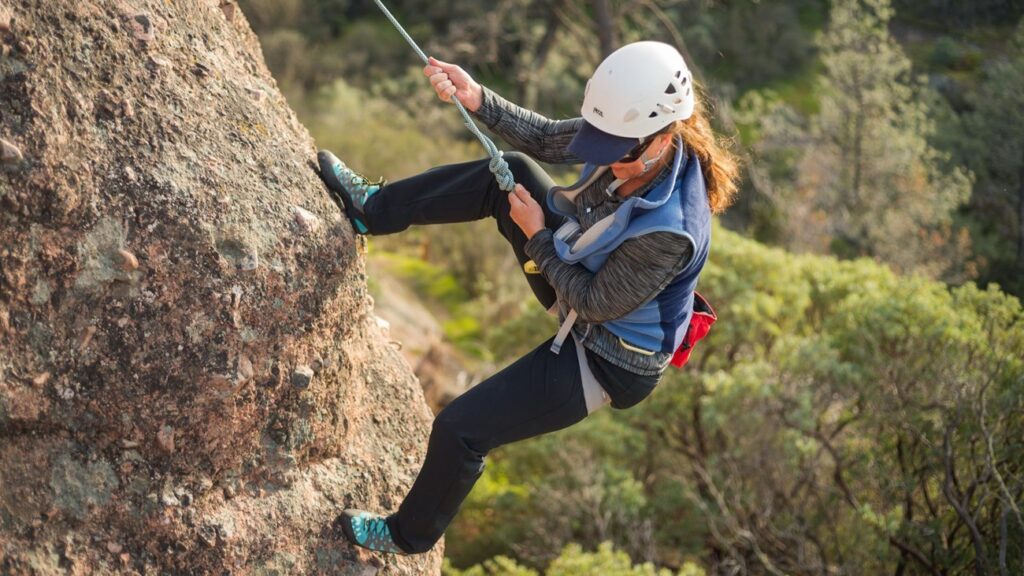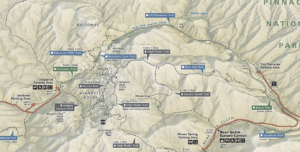Rock Climbing at Pinnacles National Park: A Climbers’ Paradise

The History of Climbing at Pinnacles National Park
Early Beginnings
Rock climbing at Pinnacles National Park has a storied history that dates back to the early 20th century. The first documented climbs occurred in the 1930s when climbers were drawn to the park’s unique rock formations. Early pioneers like David Brower and members of the Sierra Club ventured into the park, establishing some of the first climbing routes. Their explorations laid the groundwork for future generations of climbers.
Growth in Popularity
The 1960s and 1970s saw a surge in climbing activity at Pinnacles. Advances in climbing gear and techniques, coupled with the growing popularity of the sport, attracted more climbers to the park. Iconic routes were established during this period, and the climbing community began to take shape. Pinnacles became known for its adventurous climbs and the distinct challenges posed by its rock types.
Modern Climbing Scene
Today, Pinnacles National Park is a renowned climbing destination, attracting climbers from around the world. The park boasts over 500 established routes, ranging from beginner-friendly to highly technical. The climbing community continues to thrive, with climbers working together to maintain and protect the park’s climbing resources.

Geological Features of The Pinnacles
Volcanic Origins
The unique rock formations at Pinnacles are the result of ancient volcanic activity. Over 23 million years ago, volcanic eruptions in the Neenach Volcanic Field, near present-day Lancaster, California, produced vast amounts of volcanic rock. Tectonic forces, particularly the movement of the San Andreas Fault, gradually shifted these formations northward to their current location.
Rock Types
The primary rock type found at Pinnacles is breccia, a type of volcanic rock composed of angular fragments cemented together by finer-grained material. Breccia offers a variety of textures and holds, making climbing at Pinnacles a distinct experience. The rock’s surface can range from smooth and solid to highly textured and brittle, presenting unique challenges for climbers.
Talus Caves
In addition to its rock formations, Pinnacles is known for its talus caves, formed by large boulders that have fallen and created a maze of tunnels and caverns. These caves add an extra dimension to climbing at Pinnacles, offering opportunities for cave exploration and climbing routes that traverse these subterranean landscapes.
Top Climbing Spots at Pinnacles National Park
The High Peaks
The High Peaks area is one of the most iconic climbing destinations at Pinnacles. Known for its dramatic spires and breathtaking views, the High Peaks offer a range of climbing routes, from moderate to challenging. Notable climbs in this area include the classic “Machete Ridge” and “Cuidado,” both offering exhilarating ascents and panoramic vistas.
The Monolith
The Monolith is another popular climbing spot, featuring a prominent rock formation that rises sharply from the surrounding landscape. This area is known for its challenging climbs and technical routes. Climbers can test their skills on routes like “Condor Condiment” and “Portent,” which require precision and strength.
The Balconies
The Balconies area is renowned for its variety of climbing routes and stunning rock formations. This area offers routes suitable for climbers of all levels, from beginners to advanced. Notable climbs include “The Flakes” and “Sunshine Wall,” both offering unique challenges and rewarding experiences.
Bear Gulch
Bear Gulch is a favorite among climbers for its accessibility and range of climbing options. The area features numerous bouldering problems and top-rope routes, making it an excellent choice for climbers looking for shorter, more focused climbs. Popular routes in Bear Gulch include “Discovery Wall” and “The Frog.”
Tips for a Successful Climbing Adventure
When planning a climbing trip to Pinnacles National Park, it’s essential to consider the following factors:
- Season: The best time to climb at Pinnacles is during the fall, winter, and spring when temperatures are cooler. Summer can be extremely hot, making climbing uncomfortable and potentially dangerous.
- Permits and Regulations: While no permits are required specifically for climbing, it’s important to follow all park regulations and respect seasonal closures, particularly those related to nesting California condors.
- Camping and Accommodation: Pinnacles National Park offers a campground with tent sites near the East entrance but zero campign is available on the West entrance (from HWY 101) so consider a stay us at Inn at the Pinnacles!!.
Safety Considerations
Safety should always be a top priority when climbing at Pinnacles:
- Rock Quality: The breccia rock at Pinnacles can be brittle and fragile. Always test holds before committing your weight and be prepared for rockfall.
- Climbing Gear: Ensure you have the appropriate gear for your climbs, including a helmet, harness, rope, and protection. Check your gear regularly for wear and tear.
- Weather Conditions: Be aware of the weather forecast and avoid climbing during extreme heat, rain, or thunderstorms. Wet rock can be particularly hazardous.
- Emergency Preparedness: Familiarize yourself with the park’s emergency procedures and know how to contact park rangers in case of an emergency.
World class climbing in our backyard of Central California
Pinnacles National Park is a climbing paradise, offering a diverse array of routes and challenges that cater to climbers of all skill levels. The park’s unique geological features, rich history, and vibrant climbing community make it a must-visit destination for rock climbing enthusiasts. Whether you’re scaling the towering spires of the High Peaks, tackling the technical routes of the Monolith, or exploring the bouldering problems of Bear Gulch, Pinnacles promises an unforgettable climbing experience.
As you embark on your climbing adventure at The Pinnacles, remember to prioritize safety, respect the natural environment, and engage with the climbing community. By doing so, you’ll not only enjoy the thrill of climbing but also contribute to the preservation and stewardship of this remarkable national park. So, gear up, grab your climbing partner, and get ready to explore the vertical wonders of Pinnacles National Park. Happy climbing!
